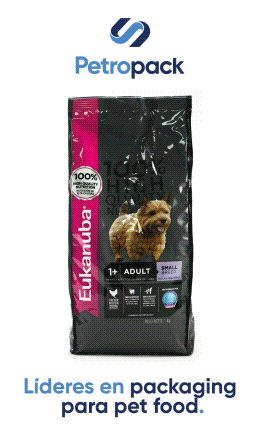According to these statistical exercises, in Mexico, there are around 60 million dogs and cats (2021), while in Chile, there are 12.5 million dogs and cats within families, and another 4 million which are homeless. These pet population figures represent 47% and 64% of their human population, respectively.
This information suggests that there seems to be a significant underestimation of the pet population in other countries in the region, which have not carried out this type of estimation exercise. Local consensus points to relatively conservative population figures.
The important point is that pet population underestimation entails costs for each country's pet food industry since medium-term demand planning is carried out with presumably incorrect information.
Pet population dynamism is another challenge for manufacturers
Even in Mexico and Chile, where there are more accurate estimates of the pet population at the national level, it is difficult to know the dynamics of these populations. The life expectancy of a dog is only 10-13 years, and that of a cat is 12-18 years. In this sense, cat and dog populations move more dynamically than human ones. For example, in just 5 years, the elderly or senior dog population could double in a certain country, and then fall. This way, a pet food manufacturer can see a sudden increase or drop in their products' sales without knowing if it is due to population reasons or another cause.
The industry generally relies on present demand to forecast future sales. However, this method ignores the dynamics and nature of the pet population. Hence we see the importance of having, at least, official national estimates of the total pet population.
How much can the pet population be underestimated?
To estimate the pet population of a country, it is necessary to carry out a census or household survey that is statistically robust and representative of it. Due to the high cost this represents, only governments dare to finance them.
Triplethree collected local information in 20 countries, both from veterinary associations as well as from the press and specialized sources. The sum of the consensus in each country yields a total of just over 200 million dogs and cats in the year 2022 in this group of countries. However, with the recent information published in Mexico and Chile, and assuming that the other countries also underestimate their pet populations, the real number of dogs and cats in Latin America can easily exceed 300 million. And this number does not consider animals in street situations.
If the pet population is, indeed, being underestimated in the region, the prospects for the pet food market are also poor, not only in terms of the total population but also by age group. I reiterate that the cost of not having this information is substantial for local industries.
Even so, the industry is growing
One of the reasons that explain the sustained growth of the pet food industry in almost all the regional countries, despite inflation and income vulnerability, is the existence of abundant consumer markets. Millions of cats and dogs are not considered in companies' demand estimates, yet they may become new customers for the industry overnight.
Without a doubt, this is good news for the region's pet food industry. In this sense, the window of opportunity extends not only to selling more products but also to innovation through food portfolio diversification.
With a presumably underestimated pet population, Latin America can easily become a formulation, ingredient, and format innovation hub. As the pet population suggests, there is plenty of room for further growth.
By: Iván Franco
Source: All Pet Food Magazine
You could be interested: Impulse Purchases Still Strong
Market Information
07/08/2025
The American Pet Products Association (APPA) Releases 2025 Dog & Cat Report, Revealing a New Era of Pet Ownership
29/07/2025

















































